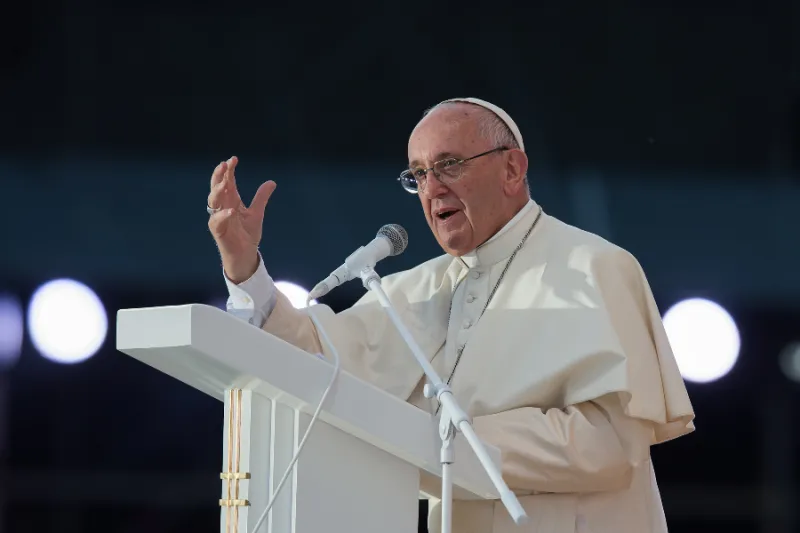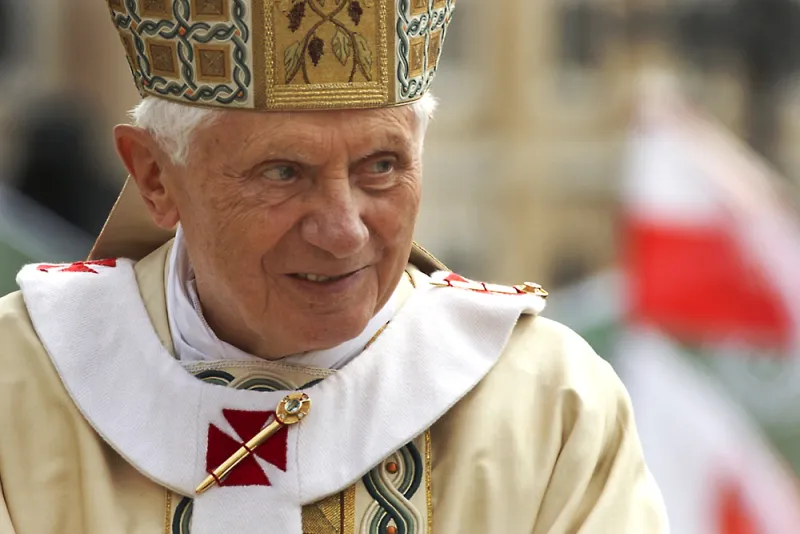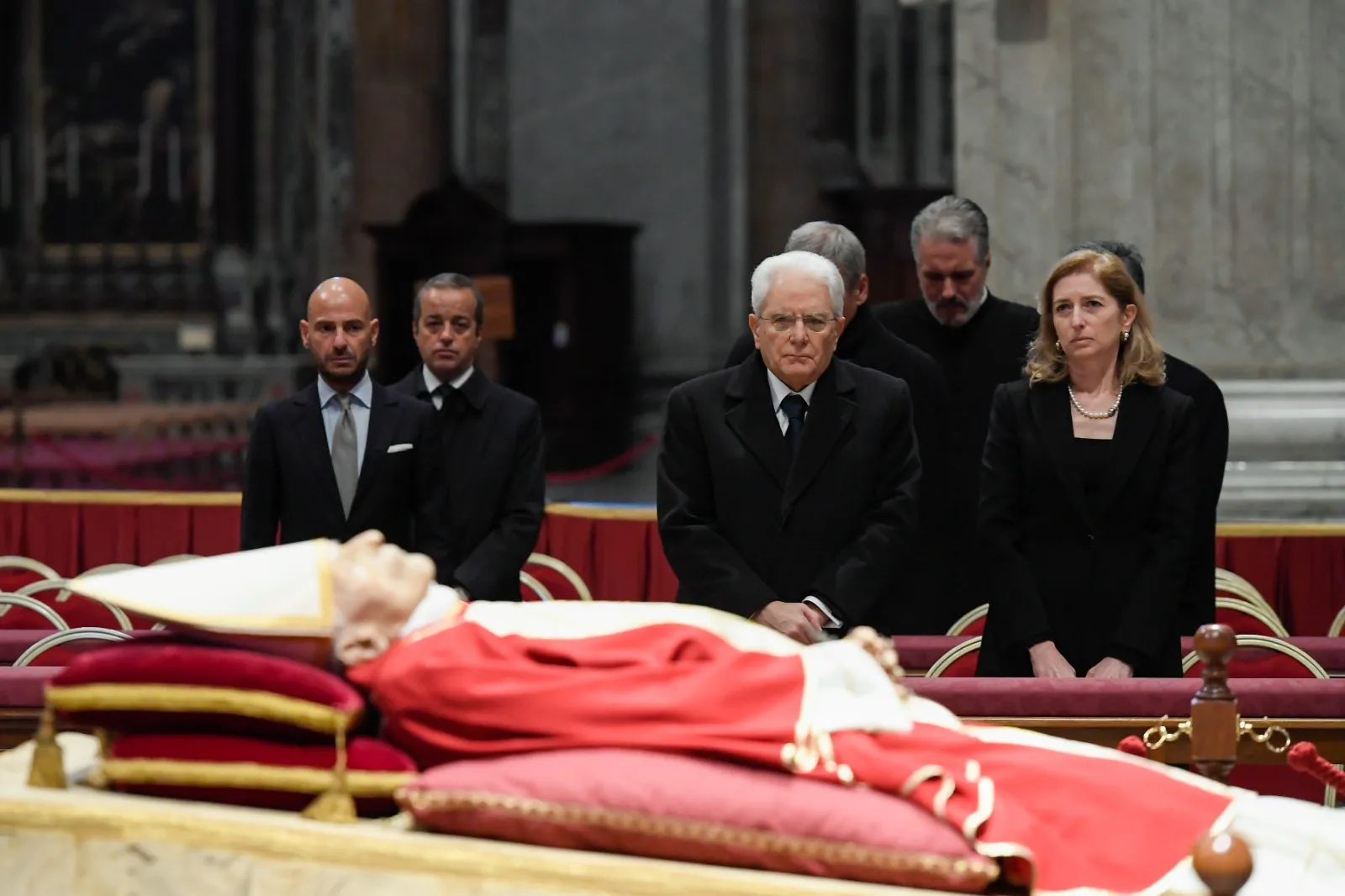
Washington D.C., Jul 20, 2018 / 12:00 pm (CNA).- The Church has consistently taught that the state has the authority to use the death penalty. But, in recent years, popes and bishops have become more vocal in calling for an end to its use. Many Catholics instinctively favor life over death, even after the worst crimes, and some are left wondering if the Church’s mind is changing.
Two recent cases highlighted an apparent tension between traditional teaching and modern circumstances.
On July 13, the bishops of Tennessee wrote to Governor Bill Haslam asking him to halt a slate of planned executions. In their letter, Bishops Mark Spalding of Nashville, Richard Stika of Knoxville, and Martin Holley of Memphis emphasized the value and dignity of every human life, even those who have committed the worst possible crimes.
One day earlier, on July 12, Cardinal Malcolm Ranjith, Archbishop of Colombo, expressed his “support” for the Sri Lankan government’s decision to introduce the death penalty for drug traffickers and organized crimes bosses.
“We will support [Sri Lankan] President Maithripala Sirisena’s decision to subject those who organize crime while being in the prison to [the] death sentence,” he told local media. The cardinal went on to add that more needed to be done to prevent drug traffickers and crime bosses from operating with impunity while in jail.
The state’s authority to execute criminals is explicitly sanctioned in the Bible, including by St. Paul. Historically, the Church has recognized the use of the death penalty in a practical way: executions were carried out in the Papal States well into the nineteenth century, with the last official executioner retiring in 1865.
For much the twentieth century, attempted assassination of the pope was a capital crime in Vatican City; Pope Paul VI only removed the death penalty from the law in 1969.
Today, the Church still officially teaches that the death penalty is a legitimate option for states to employ.
The Catechism of the Catholic Church teaches this: “Assuming that the guilty party’s identity and responsibility have been fully determined, the traditional teaching of the Church does not exclude recourse to the death penalty, if this is the only possible way of effectively defending human lives against the unjust aggressor.”
This formulation contains a heavy qualification. When exactly is the death penalty the only effective means of defending human life? That’s a thorny question.
St. John Paul II was outspoken in his opposition to the use of capital punishment. In an address in the United States, in 1999, he called for Christians to be “unconditionally pro-life” and said that “the dignity of human life must never be taken away, even in the case of someone who has done great evil.” He also spoke of his desire for a consensus to end the death penalty, which he called “cruel and unnecessary.”
That address, given in St. Louis, was credited with helping persuade to Missouri Governor Mel Carnahan to commute the death sentence of inmate Darrell Mease to life in prison.
More recently, Pope Francis has denounced capital punishment in even stronger terms. Speaking in October 2017, he called it “contrary to the Gospel” because “it is freely decided to suppress a human life that is always sacred in the eyes of the Creator, and of which, in the final analysis, God alone is the true judge and guarantor.” He has, however, stopped short of revising the official teaching contained in the Catechism.
There is a broad sentiment among American Catholics against the death penalty. It is a point of unusually strong consensus, even among those who normally disagree. In 2015, four Catholic publications with often-divergent viewpoints issued a joint editorial calling for an end to capital punishment.
But Catholic thinkers do not unanimously agree that a total renunciation of the death penalty is appropriate, or even possible.
Cardinal Joseph Bernadin, in his famous “Consistent Ethic of Life” speech delivered at Fordham University in 1983, explicitly recognized the legitimate authority of the state to resort to capital punishment. Cardinal Avery Dulles, writing in 2001, observed that “the Catholic magisterium does not, and never has, advocated unqualified abolition of the death penalty.”
While there is real scope for debate about when and how sparingly capital punishment should be used, Dulles concluded that “the death penalty is not in itself a violation of the right to life.”
His conclusion was informed by the constant teaching of the Church that judicial executions are licit, even if regrettable and to be avoided whenever possible.
In the City of God, St. Augustine wrote that the state administers justice under divine concession. “Since the agent of authority is but a sword in the hand, and is not responsible for the killing, it is in no way contrary to the commandment, “Thou shalt not kill”… for the representatives of the State’s authority to put criminals to death, according to law or the rule of rational justice.”
While the trend of recent papal statements has been towards a relegation of the death penalty to, at most, a theoretical possibility, scholars have urged caution about going too far.
Dr. Chad Pecknold, associate professor of systematic theology at the Catholic University of America, told CNA that it was important distinguish between changing circumstances and a change in what the Church has always taught.
“The Church has always held that the death penalty is a just option available to the state, even if we do not welcome its use. St. Augustine says that the death penalty is just, but the Church should plead for mercy.”
Pecknold stressed that relationship between mercy and justice is a live concern. In seeking mercy, he said, we must implicitly recognize the validity of justice.
“Mercy isn’t calling something that is just ‘unjust.’ Mercy relieves the punishment properly due to the guilty. As the Catechism recognizes, there can be circumstances in which the death penalty is a legitimate service to justice. This is qualified by a preferential option for other means, whenever they can serve the same ends.”
These alternative means have not been always and everywhere available. “The common and constant teaching of the Church can be applied to different circumstances. Alternatives available to us in modern western countries simply have not been present at other times, or may not be now in other places.”
There is a crucial difference between applying a consistent teaching to changed circumstances and appearing to suggest humanity has evolved beyond a previously valid doctrine, Pecknold said.
“The death penalty is not, and has never been a positive end in itself. It is a means towards serving justice. If we find we can now serve the same ends and express a preferential option for life, this is doubly good.”
“But we should not fall into a false understanding that what was once ‘good’ is now ‘bad.’ The Church doesn’t evolve out of a true teaching, nor does humanity progress beyond natural law.”
“We should prize our increasing opportunities to serve mercy and justice together, but be wary of giving ourselves too much credit, we have not progressed to a new, higher level of justice.”
Cardinal Dulles agreed. He considered the argument that Church sanctioning of capital punishment was an “outmoded” concession to past ages of “violence” and “barbarity,” one which could yield to “the signs of the times” and “a new recognition of the dignity and inalienable rights of the human person.” He dismissed this as “a tempting simplicity” which found “no echo” among Catholic theologians of the past.
The consensus against capital punishment in modern western nations, it must be observed, has grown in line with increased prosperity, political stability, and states’ ability to deploy credibly effective alternatives to execution.
In the recent Sri Lankan case, the government acted in response to the ineffectiveness of prison sentences, with drug traffickers and crime bosses seeming to continue operating with impunity, even behind bars. Following local complaints at his expression of support, Cardinal Ranjith issued a clarification, making clear his support for the government announcement was not a “carte blanche” advocacy for the death penalty, but noting that he could not “close my eyes and do nothing before this terrible phenomenon our country is faced with.”
“[The drug trade] causes death and violence in the streets and the destruction of the cream of our youth, who become drug addicts at an age as early as their adolescence, being exposed to drugs even in their schools. This is being done by drug cartels operated at times from the prisons,” he said.
For Ranjith, such a context seems to find a place within the Catechism’s criteria that capital punishment be reserved for the final defense of innocent life when other options fail.
In the West, conditions seem to be narrowing the scope for the death penalty’s use, and bishops are responding, which has led to a sense, especially after Pope Francis’ comments last year, that the Church might declare the death penalty absolutely unjust. Yet, as was recently seen in Sri Lanka and Tennessee, things are not yet the same everywhere.
That serves as a good reminder about the importance of understanding the Church’s global perspective, and the importance of distinguishing between teachings which supply criteria through which Catholics must make moral judgments, and teachings which declare that certain actions are, in fact, immoral everywhere and always.
The Church’s teaching on the death penalty expresses, essentially, a criteria by which state authorities should make judgments about the just use of the death penalty. While in the developed West, use of the death penalty may, in fact, be almost completely unnecessary, not all parts of the world are as developed.
The divergence of views from bishops around the world on this issue reflects the role that the circumstances of time and place can play in moral reasoning. That is instructive, and a reminder about the complex richness, and importance, of Catholic moral teaching.
 […]
[…]









Surely China, Russia and Saudi Arabia will eventually embrace fraternity and sign the new climate accord.
So, the remaining question is how to deal with such as these bad actors once the invitation to dialogue falls short. The hope is that a new grassroots and trans-boundary consciousness might emerge, perhaps even under a Synod on Synodality which reaches beyond the Church and into a world of fallen-aways and atheists and such.
But then, on the other hand, this is a big wager with multiple abysses of all types now on the poker table…In addition to the named ecological crisis, the social crisis, and the health crisis, the underlying, enabling and post-Christian “culture of death” also comes to mind. As does the duty and “window of opportunity” for laymen in the secular world to at least not aggressively make the disinterred culture of Baal even worse. Biden, of course, reports that he’s a good boy and that government funding of Aztec-like fetal dismemberment is a non-issue, and no one says otherwise. Thus, it cometh to pass that the “window of opportunity” to deal with Cupich’s “rabbit hole” catastrophe yet again passes us by.
Best not to shine a light on the Church’s spiritual crisis of Eucharist incoherence. All crises are equal, but some crises are more equal than others.
Never let a good crisis go to waste is a principle for antithetical action found in Saul Alinsky’s Rules for Radicals [also Never waste a crisis adopted by ex Chicago Mayor Rahm Emanuel]. Is it unusual that Pope Francis perceives the Covid crisis as an opportunity to advance an agenda? “Thus, an ecological crisis, represented by the cry of the earth, and a social crisis, represented by the cry of the poor, have been made deadly by a healthcare crisis, the Covid-19 pandemic” (Francis). Ecology and poverty are made deadly, the antithesis to their neutral character, which is the thesis. Although it seems difficult to make that dual inference, the pontiff explains that the disease amplifies the disturbance of our global ecology presumably by industry and the high morbidity among the poor as compared to the affluent. While there is statistical indication that holds for the poor Francis somehow finds correspondence of disease with ecology. “Making peace with nature must be a priority for the 21st century” is the clue. “Heedless dominion over the Earth”, Mother Earth is the realization of his thought, a warfare with nature as if Earth mother were retaliating. His Holiness makes the added inference that Covid is that retaliative punishment on Mankind. True to Alinskyan subversion rules, the antithesis advances his agenda. His supporting premise is that the Covid virus is a product of nature rather than a biological weapon engineered by the CCP at China’s Hunan lab. Despite that all the evidence points to the lab. The resolution is found in economic equanimity and ecology, rather than correcting China’s inhumanity to Man. And of course the abeyance from the current issue of globalized abortion.
An addendum. Hunan is famous for its cuisine, Hunan chicken a specialty. Whereas Wuhan is notorious for its virus research.
I still believe that this Wuhan Epidemic is Divine Punishment in part to Pope Francis allowing, and participating in, the worship of the disgusting Pachamama Demon Idol in the Vatican Gardens in 2019. Is it coincidence that the Virus appeared to have originated in Wuhan at almost the exact same time? I think not.
Yes, and consider modern man’s moral degradation. The number of persons participating in contraception, abortion, gender-mutilation and other unnatural acts continues to grow. Younger and progressively younger members are recruited to such practices. The appalling horror should be clear and our lenses should magnify. We witnessed (in Loudoun County, Va.) the father of a daughter ARRESTED for his ANGER because NO ONE IN AUTHORITY NOTIFIED HIM THAT HIS DAUGHTER had been RAPED in her public school bathroom.
Scripture has it: God chastises those He loves. If man continues to act against God’s glory, against the goodness and purpose of our and His nature, man shall continue to witness greater crises of nature where God appears not to dwell. Scripture and God’s prophets have said so.
As Fr. Peter says, to claim that poverty and industrialization are to blame is an inference (Meiron adds: suggestive of egregious logical error). I reassert: Francis needs a bedside Bible, a good spiritual director (He is always available to those who knock), and a course in Thomistic metaphysics. For a start, a pure, humble, chastened heart will work wonders.
Addendum: That one is far from a pure, humble, chastened heart does not bode well for a peaceful future. We are in the thick of it with more clouds and crises forecast.
With just one exception, I agree with our Pope regarding his concerns.
Right from the beginning, man had a simple religion. It was a God-inspired one. The tenets were simple. Revere God and be good stewards of creation. And this is how they did live. This God-based humanism ensured that they lived in a paradise. But then their relationship with God was completely ruined when, under Satan’s influence, selflessness gave way to self-centeredness. All disobedient actions have consequences and, in this case, the Garden became a wasteland. It was then that death, confusion, disorder and other damaging consequences set in. Paradise was lost. Adam’s sinful action badly affected nature.
It happened also in Noah’s time. The affect of sinful ways was enacted through nature. And nature again played a devastating role in Sodom. We do not really know what the full extent of the consequences of our wrongdoings. Only God knows.
The problem I do have is the connection that is being made between our CO2 and climate. I do not believe that CO2 has heat-generating capacity. I am worried because CO2 is vital for plant survival, and plants do make food for all living things. Satan, who out of hatred of God, has attacked our marriage and family, and also our nature by playing with our two genders. Now, by attacking CO2, is he trying to deprive us of food? If anyone can prove that CO2 does generate heat, that it causes global warming and consequently climate change, I will rethink my views.
es of our disobedient actions are. Only God knows his laws. When Jesus walked the earth, he emphasized the same
Loving neighbor obviously includes his living conditions.
Besides these examples,
it is so easy for us to see how polluted waters and air can cause us, the flora and fauna problems. We know that people living in slums and unhygienic conditions ca
The problem I have is the connection that they are making between our CO2 and climate. Carbon, which is so important for our ecosystem is being made into a villain. I just wonder if this is part of Satan’s strategy to “hurt” God by attacking CO2. Satan has got us to harm family (abortion), marriage (divorce and SSM), our nature (the two genders that are vital for our survival) and now CO2 (vital for plants and the food they make for all living things). If anyone can prove that CO2 causes global warming and subsequently climate change, then I will rethink this issue.